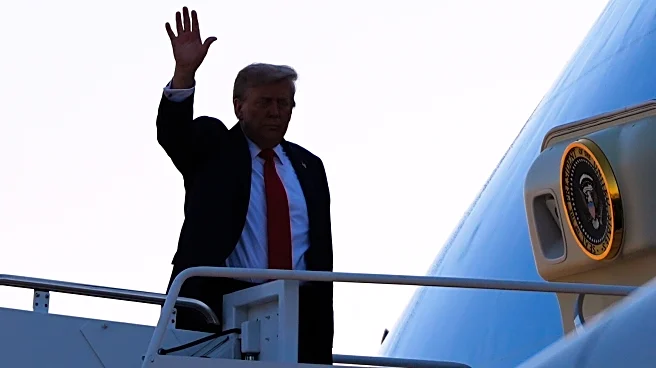What's Happening?
Sensitive government documents detailing the schedule and seating arrangements for the recent summit between President Trump and Russian President Putin were accidentally left on a hotel printer in Alaska. The documents included information about meeting locations, seating charts, and a planned lunch menu, as well as phonetic pronunciations of Russian names. The discovery of these documents raises concerns about potential security breaches, as such information is typically kept confidential until after events occur. The White House has dismissed the incident as a non-security breach, despite the sensitive nature of the information.
Why It's Important?
The accidental disclosure of sensitive summit details highlights potential vulnerabilities in government security protocols. Such breaches can have serious implications for national security, as they may expose the movements and plans of world leaders to unauthorized parties. The incident also raises questions about the effectiveness of current security measures and the need for improved protocols to prevent similar occurrences in the future. The breach could impact diplomatic relations and trust between the U.S. and its allies, as well as between the U.S. and Russia.
What's Next?
The White House may need to review and strengthen its security protocols to prevent future breaches. An investigation into the incident could be launched to determine how the documents were left behind and to identify any lapses in security procedures. The incident may also prompt discussions about the importance of maintaining confidentiality in diplomatic engagements and the potential consequences of security breaches.
Beyond the Headlines
The breach underscores the challenges of maintaining security in high-profile diplomatic events, where the risk of information leaks is heightened. It also highlights the importance of transparency and accountability in government operations, as public trust can be affected by perceived lapses in security. The incident serves as a reminder of the need for vigilance and proactive measures to safeguard sensitive information.












